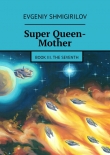
Текст книги "The British Study Edition of the Urantia Papers"
Автор книги: Tigran Aivazian
Жанр:
Религия
сообщить о нарушении
Текущая страница: 67 (всего у книги 295 страниц)
42:6.1 While the space charge of universal force is homogeneous and undifferentiated, the organization of evolved energy into matter entails the concentration of energy into discrete masses of definite dimensions and established weight – precise gravity reaction.
42:6.2 Local or linear gravity becomes fully operative with the appearance of the atomic organization of matter. Preatomic matter becomes slightly gravity responsive when activated by X ray and other similar energies, but no measurable linear-gravity pull is exerted on free, unattached, and uncharged electronic-energy particles or on unassociated ultimatons.
42:6.3 ¶ Ultimatons function by mutual attraction, responding only to the circular Paradise-gravity pull. Without linear-gravity response they are thus held in the universal space drift. Ultimatons are capable of accelerating revolutionary velocity to the point of partial antigravity behaviour, but they cannot, independent of force organizers or power directors, attain the critical escape velocity of deindividuation, return to the puissant-energy stage. In nature, ultimatons escape the status of physical existence only when participating in the terminal disruption of a cooled-off and dying sun.
42:6.4 ¶ The ultimatons, unknown on Urantia, slow down through many phases of physical activity before they attain the revolutionary-energy prerequisites to electronic organization. Ultimatons have three varieties of motion: mutual resistance to cosmic force, individual revolutions of antigravity potential, and the intraelectronic positions of the 100 mutually interassociated ultimatons.
42:6.5 Mutual attraction holds 100 ultimatons together in the constitution of the electron; and there are never more nor less than 100 ultimatons in a typical electron. The loss of one or more ultimatons destroys typical electronic identity, thus bringing into existence one of the 10 modified forms of the electron.
42:6.6 Ultimatons do not describe orbits or whirl about in circuits within the electrons, but they do spread or cluster in accordance with their axial revolutionary velocities, thus determining the differential electronic dimensions. This same ultimatonic velocity of axial revolution also determines the negative or positive reactions of the several types of electronic units. The entire segregation and grouping of electronic matter, together with the electric differentiation of negative and positive bodies of energy-matter, result from these various functions of the component ultimatonic interassociation.
42:6.7 ¶ Each atom is a trifle over 2.54·10−8 cm in diameter, while an electron weighs a little more[2] [1]
more, In 1955 text: less. [For historical reference, the first discussion of the relative masses of the structural elements of atoms in the Encyclopaedia Britannica is found in its 11th Edition (1910 / 1911) with revisions in the 12th (1922). The calculation of the relative masses of the electron and the hydrogen atom was undergoing a rapid evolution just prior to the writing of The Urantia Book, the ratio being 1:1700 in 1897; 1:2000 in 1904; and 1:1845 by 1922. This last ratio is also the one quoted in the 1934 Websters.] The revised wording is consistent with the statement in the paragraph following the subject paragraph 42:6.8 in the text where the author states that a proton is “eighteen hundred times as heavy as an electron;” and is also in general agreement with current scientific opinion which places the ratio at about 1:1836. After the committee’s work, this item, plus the closely-related following item, are the only recommended changes that do not have a straightforward typographical explanation.
[Закрыть] than 1/2,000th of the smallest atom, hydrogen. The positive proton, characteristic of the atomic nucleus, while it may be no larger than a negative electron, weighs from 2,000 to 3,000 times more.
42:6.8 ¶ If the mass of matter should be magnified until that of an electron equalled 3 g, then were size to be proportionately magnified, the volume of such an electron would become as large as that of the earth. If the volume of a proton – 1,800 times as heavy as an electron – should be magnified to the size of the head of a pin, then, in comparison, a pin’s head would attain a diameter equal to that of the earth’s orbit around the sun.
7. ATOMIC MATTER42:7.1 The formation of all matter is on the order of the solar system. There is at the centre of every minute universe of energy a relatively stable, comparatively stationary, nuclear portion of material existence. This central unit is endowed with a threefold possibility of manifestation. Surrounding this energy centre there whirl, in endless profusion but in fluctuating circuits, the energy units which are faintly comparable to the planets encircling the sun of some starry group like your own solar system.
42:7.2 ¶ Within the atom the electrons revolve about the central proton with about the same comparative room the planets have as they revolve about the sun in the space of the solar system. There is the same relative distance, in comparison with actual size, between the atomic nucleus and the inner electronic circuit as exists between the inner planet, Mercury, and your sun.
42:7.3 The electronic axial revolutions and their orbital velocities about the atomic nucleus are both beyond the human imagination, not to mention the velocities of their component ultimatons. The positive particles of radium fly off into space at the rate of 16,000 km/s, while the negative particles attain a velocity approximating that of light.
42:7.4 ¶ The local universes are of decimal construction. There are just 100 distinguishable atomic materializations of space-energy in a dual universe; that is the maximum possible organization of matter in Nebadon. These 100 forms of matter consist of a regular series in which from 1 to 100 electrons revolve around a central and relatively compact nucleus. It is this orderly and dependable association of various energies that constitutes matter.
42:7.5 Not every world will show 100 recognizable elements at the surface, but they are somewhere present, have been present, or are in process of evolution. Conditions surrounding the origin and subsequent evolution of a planet determine how many of the 100 atomic types will be observable. The heavier atoms are not found on the surface of many worlds. Even on Urantia the known heavier elements manifest a tendency to fly to pieces, as is illustrated by radium behaviour.
42:7.6 Stability of the atom depends on the number of electrically inactive neutrons in the central body. Chemical behaviour is wholly dependent on the activity of the freely revolving electrons.
42:7.7 ¶ In Orvonton it has never been possible naturally to assemble over 100 orbital electrons in one atomic system. When 100 and 1 have been artificially introduced into the orbital field, the result has always been the instantaneous disruption of the central proton with the wild dispersion of the electrons and other liberated energies.
42:7.8 ¶ While atoms may contain from 1 to 100 orbital electrons, only the outer 10 electrons of the larger atoms revolve about the central nucleus as distinct and discrete bodies, intactly and compactly swinging around on precise and definite orbits. The 30 electrons nearest the centre are difficult of observation or detection as separate and organized bodies. This same comparative ratio of electronic behaviour in relation to nuclear proximity obtains in all atoms regardless of the number of electrons embraced. The nearer the nucleus, the less there is of electronic individuality. The wavelike energy extension of an electron may so spread out as to occupy the whole of the lesser atomic orbits; especially is this true of the electrons nearest the atomic nucleus.
42:7.9 The 30 innermost orbital electrons have individuality, but their energy systems tend to intermingle, extending from electron to electron and well-nigh from orbit to orbit. The next 30 electrons constitute the second family, or energy zone, and are of advancing individuality, bodies of matter exerting a more complete control over their attendant energy systems. The next 30 electrons, the third energy zone, are still more individualized and circulate in more distinct and definite orbits. The last 10 electrons, present in only the 10 heaviest elements, are possessed of the dignity of independence and are, therefore, able to escape more or less freely from the control of the mother nucleus. With a minimum variation in temperature and pressure, the members of this fourth and outermost group of electrons will escape from the grasp of the central nucleus, as is illustrated by the spontaneous disruption of uranium and kindred elements.
42:7.10 The first 27 atoms, those containing from 1 to 27 orbital electrons, are more easy of comprehension than the rest. From 28 upward we encounter more and more of the unpredictability of the supposed presence of the Unqualified Absolute. But some of this electronic unpredictability is due to differential ultimatonic axial revolutionary velocities and to the unexplained “huddling” proclivity of ultimatons. Other influences – physical, electrical, magnetic, and gravitational – also operate to produce variable electronic behaviour. Atoms therefore are similar to persons as to predictability. Statisticians may announce laws governing a large number of either atoms or persons but not for a single individual atom or person.
8. ATOMIC COHESION42:8.1 While gravity is one of several factors concerned in holding together a tiny atomic energy system, there is also present in and among these basic physical units a powerful and unknown energy, the secret of their basic constitution and ultimate behaviour, a force which remains to be discovered on Urantia. This universal influence permeates all the space embraced within this tiny energy organization.
42:8.2 The interelectronic space of an atom is not empty. Throughout an atom this interelectronic space is activated by wavelike manifestations which are perfectly synchronized with electronic velocity and ultimatonic revolutions. This force is not wholly dominated by your recognized laws of positive and negative attraction; its behaviour is therefore sometimes unpredictable. This unnamed influence seems to be a space-force reaction of the Unqualified Absolute.
42:8.3 ¶ The charged protons and the uncharged neutrons of the nucleus of the atom are held together by the reciprocating function of the mesotron[3] [1]
mesotron – usually called meson in the modern physics texts.
[Закрыть], a particle of matter 180 times as heavy as the electron. Without this arrangement the electric charge carried by the protons would be disruptive of the atomic nucleus.
42:8.4 As atoms are constituted, neither electric nor gravitational forces could hold the nucleus together. The integrity of the nucleus is maintained by the reciprocal cohering function of the mesotron, which is able to hold charged and uncharged particles together because of superior force-mass power and by the further function of causing protons and neutrons constantly to change places[4] [2]
protons and neutrons constantly to change places. The mechanism of π+ pion exchange described here was first suggested by Hideki Yukawa in 1935 and experimentally confirmed in 1947. However, in 1964 it was superseded by the quark model, according to which the proton-neutron force is a kind of “residual” force caused by the gluon exchange between the quark constituents of nucleons.
[Закрыть]. The mesotron causes the electric charge of the nuclear particles to be incessantly tossed back and forth between protons and neutrons. At one infinitesimal part of a second a given nuclear particle is a charged proton and the next an uncharged neutron. And these alternations of energy status are so unbelievably rapid that the electric charge is deprived of all opportunity to function as a disruptive influence. Thus does the mesotron function as an “energy-carrier” particle which mightily contributes to the nuclear stability of the atom.
42:8.5 The presence and function of the mesotron also explains another atomic riddle. When atoms perform radioactively, they emit far more energy than would be expected. This excess of radiation is derived from the breaking up of the mesotron “energy carrier,” which thereby becomes a mere electron. The mesotronic disintegration is also accompanied by the emission of certain small uncharged particles.
42:8.6 The mesotron explains certain cohesive properties of the atomic nucleus, but it does not account for the cohesion of proton to proton nor for the adhesion of neutron to neutron. The paradoxical and powerful force of atomic cohesive integrity is a form of energy as yet undiscovered on Urantia.
42:8.7 These mesotrons are found abundantly in the space rays which so incessantly impinge upon your planet.
9. NATURAL PHILOSOPHY42:9.1 Religion is not alone dogmatic; natural philosophy equally tends to dogmatize. When a renowned religious teacher reasoned that the number 7 was fundamental to nature because there are 7 openings in the human head, if he had known more of chemistry, he might have advocated such a belief founded on a true phenomenon of the physical world. There is in all the physical universes of time and space, notwithstanding the universal manifestation of the decimal constitution of energy, the ever-present reminder of the reality of the sevenfold electronic organization of prematter.
42:9.2 The number 7 is basic to the central universe and the spiritual system of inherent transmissions of character, but the number ten, the decimal system, is inherent in energy, matter, and the material creation. Nevertheless the atomic world does display a certain periodic characterization which recurs in groups of 7 – a birthmark carried by this material world indicative of its far-distant spiritual origin.
42:9.3 This sevenfold persistence of creative constitution is exhibited in the chemical domains as a recurrence of similar physical and chemical properties in segregated periods of 7 when the basic elements are arranged in the order of their atomic weights. When the Urantia chemical elements are thus arranged in a row, any given quality or property tends to recur by sevens. This periodic change by sevens recurs diminishingly and with variations throughout the entire chemical table, being most markedly observable in the earlier or lighter atomic groupings. Starting from any one element, after noting some one property, such a quality will change for six consecutive elements, but on reaching the eighth, it tends to reappear, that is, the eighth chemically active element resembles the first, the ninth the second, and so on. Such a fact of the physical world unmistakably points to the sevenfold constitution of ancestral energy and is indicative of the fundamental reality of the sevenfold diversity of the creations of time and space. Man should also note that there are 7 colours in the natural spectrum.
42:9.4 But not all the suppositions of natural philosophy are valid; for example, the hypothetical ether, which represents an ingenious attempt of man to unify his ignorance of space phenomena. The philosophy of the universe cannot be predicated on the observations of so-called science. If such a metamorphosis could not be seen, a scientist would be inclined to deny the possibility of developing a butterfly out of a caterpillar.
42:9.5 Physical stability associated with biologic elasticity is present in nature only because of the well-nigh infinite wisdom possessed by the Master Architects of creation. Nothing less than transcendental wisdom could ever design units of matter which are at the same time so stable and so efficiently flexible.
10. UNIVERSAL NONSPIRITUAL ENERGY SYSTEMS(MATERIAL MIND SYSTEMS)
42:10.1 The endless sweep of relative cosmic reality,[5] [3]
reality, In 1955 text no comma here.
[Закрыть] from the absoluteness of Paradise monota to the absoluteness of space potency, is suggestive of certain evolutions of relationship in the nonspiritual realities of the First Source and Centre – those realities which are concealed in space potency, revealed in monota, and provisionally disclosed on intervening cosmic levels. This eternal cycle of energy, being circuited in the Father of universes, is absolute and, being absolute, is expansile in neither fact nor value; nevertheless the Primal Father is even now – as always – self-realizing of an ever-expanding arena of time-space, and of time-space-transcended, meanings, an arena of changing relationships wherein energy-matter is being progressively subjected to the overcontrol of living and divine spirit through the experiential striving of living and personal mind.
42:10.2 The universal nonspiritual energies are reassociated in the living systems of non-Creator minds on various levels, certain of which may be depicted as follows:
42:10.3 1. Preadjutant-spirit minds. This level of mind is nonexperiencing and on the inhabited worlds is ministered by the Master Physical Controllers. This is mechanical mind, the nonteachable intellect of the most primitive forms of material life, but the nonteachable mind functions on many levels beside that of primitive planetary life.
42:10.4 2. Adjutant-spirit minds. This is the ministry of a local universe Mother Spirit functioning through her 7 adjutant mind-spirits on the teachable (nonmechanical) level of material mind. On this level material mind is experiencing: as subhuman (animal) intellect in the first five adjutants; as human (moral) intellect in the 7 adjutants; as superhuman (midwayer) intellect in the last 2 adjutants.
42:10.5 3. Evolving morontia minds — the expanding consciousness of evolving personalities in the local universe ascending careers. This is the bestowal of the local universe Mother Spirit in liaison with the Creator Son. This mind level connotes the organization of the morontia type of life vehicle, a synthesis of the material and the spiritual which is effected by the Morontia Power Supervisors of a local universe. Morontia mind functions differentially in response to the 570 levels of morontia life, disclosing increasing associative capacity with the cosmic mind on the higher levels of attainment. This is the evolutionary course of mortal creatures, but mind of a nonmorontia order is also bestowed by a Universe Son and a Universe Spirit upon the nonmorontia children of the local creations.
42:10.6 ¶ The cosmic mind. This is the sevenfold diversified mind of time and space, one phase of which is ministered by each of the Seven Master Spirits to one of the 7 superuniverses. The cosmic mind encompasses all finite-mind levels and co-ordinates experientially with the evolutionary-deity levels of the Supreme Mind and transcendentally with the existential levels of absolute mind – the direct circuits of the Conjoint Actor.
42:10.7 On Paradise, mind is absolute; in Havona, absonite; in Orvonton, finite. Mind always connotes the presence-activity of living ministry plus varied energy systems, and this is true of all levels and of all kinds of mind. But beyond the cosmic mind it becomes increasingly difficult to portray the relationships of mind to nonspiritual energy. Havona mind is subabsolute but superevolutionary; being existential-experiential, it is nearer the absonite than any other concept revealed to you. Paradise mind is beyond human understanding; it is existential, nonspatial, and nontemporal. Nevertheless, all of these levels of mind are overshadowed by the universal presence of the Conjoint Actor – by the mind-gravity grasp of the God of mind on Paradise.
11. UNIVERSE MECHANISMS42:11.1 In the evaluation and recognition of mind it should be remembered that the universe is neither mechanical nor magical; it is a creation of mind and a mechanism of law. But while in practical application the laws of nature operate in what seems to be the dual realms of the physical and the spiritual, in reality they are one. The First Source and Centre is the primal cause of all materialization and at the same time the first and final Father of all spirits. The Paradise Father appears personally in the extra-Havona universes only as pure energy and pure spirit – as the Thought Adjusters and other similar fragmentations.
42:11.2 ¶ Mechanisms do not absolutely dominate the total creation; the universe of universes in toto is mind planned, mind made, and mind administered. But the divine mechanism of the universe of universes is altogether too perfect for the scientific methods of the finite mind of man to discern even a trace of the dominance of the infinite mind. For this creating, controlling, and upholding mind is neither material mind nor creature mind; it is spirit-mind functioning on and from creator levels of divine reality.
42:11.3 The ability to discern and discover mind in universe mechanisms depends entirely on the ability, scope, and capacity of the investigating mind engaged in such a task of observation. Time-space minds, organized out of the energies of time and space, are subject to the mechanisms of time and space.
42:11.4 ¶ Motion and universe gravitation are twin facets of the impersonal time-space mechanism of the universe of universes. The levels of gravity response for spirit, mind, and matter are quite independent of time, but only true spirit levels of reality are independent of space (nonspatial). The higher mind levels of the universe – the spirit-mind levels – may also be nonspatial, but the levels of material mind, such as human mind, are responsive to the interactions of universe gravitation, losing this response only in proportion to spirit identification. Spirit-reality levels are recognized by their spirit content, and spirituality in time and space is measured inversely to the linear-gravity response.
42:11.5 Linear-gravity response is a quantitative measure of nonspirit energy. All mass – organized energy – is subject to this grasp except as motion and mind act upon it. Linear gravity is the short-range cohesive force of the macrocosmos somewhat as the forces of intra-atomic cohesion are the short-range forces of the microcosmos. Physical materialized energy, organized as so-called matter, cannot traverse space without affecting linear-gravity response. Although such gravity response is directly proportional to mass, it is so modified by intervening space that the final result is no more than roughly approximated when expressed as inversely according to the square of the distance. Space eventually conquers linear gravitation because of the presence therein of the antigravity influences of numerous supermaterial forces which operate to neutralize gravity action and all responses thereto.
42:11.6 ¶ Extremely complex and highly automatic-appearing cosmic mechanisms always tend to conceal the presence of the originative or creative indwelling mind from any and all intelligences very far below the universe levels of the nature and capacity of the mechanism itself. Therefore is it inevitable that the higher universe mechanisms must appear to be mindless to the lower orders of creatures. The only possible exception to such a conclusion would be the implication of mindedness in the amazing phenomenon of an apparently self-maintaining universe — but that is a matter of philosophy rather than one of actual experience.
42:11.7 Since mind co-ordinates the universe, fixity of mechanisms is nonexistent. The phenomenon of progressive evolution associated with cosmic self-maintenance is universal. The evolutionary capacity of the universe is inexhaustible in the infinity of spontaneity. Progress towards harmonious unity, a growing experiential synthesis superimposed on an ever-increasing complexity of relationships, could be effected only by a purposive and dominant mind.
42:11.8 The higher the universe mind associated with any universe phenomenon, the more difficult it is for the lower types of mind to discover it. And since the mind of the universe mechanism is creative spirit-mind (even the mindedness of the Infinite), it can never be discovered or discerned by the lower-level minds of the universe, much less by the lowest mind of all, the human. The evolving animal mind, while naturally God-seeking, is not alone and of itself inherently God-knowing.








